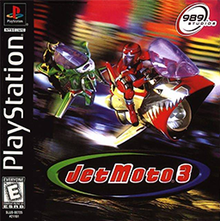Wipeout is a series of futuristic anti-gravity racing video games developed by Studio Liverpool.

Jumping Flash! is a platform video game developed by Exact and Ultra and published by Sony Computer Entertainment for the PlayStation. It was released on 28 April 1995 in Japan, 29 September 1995 in PAL territories and 2 November 1995 in North America. It was re-released through the PlayStation Network store on PlayStation 3 and PlayStation Portable in 2007, in 2012 on PlayStation Vita and again in 2022 on PlayStation 4 and PlayStation 5.
SingleTrac Entertainment Technologies, Inc. was an American video game developer, mostly for the PlayStation platform. The management team and much of the original development team came from Evans & Sutherland, bringing their 3D graphics and software engineering skills into the video game industry. Its most famous titles were the Twisted Metal and Jet Moto video game series.

Midnight Club: Street Racing is a 2000 racing video game developed by Angel Studios and published by Rockstar Games. The game focuses on competitive street racing and the import scene. The game was released for the PlayStation 2 and Game Boy Advance platforms, the former being a launch title for the platform. It is the first game in Midnight Club franchise, followed by Midnight Club II.
Jet Moto is a series of futuristic racing games for the PlayStation video game console. Jet Moto (1996) and Jet Moto 2 (1997) were developed by SingleTrac, known for Twisted Metal and Twisted Metal 2. SingleTrac then left Sony, the publisher of the series, and Jet Moto 3 (1999) was developed by Pacific Coast Power & Light in their absence. They would also go on to develop Jet Moto 2124, which was cancelled two years into development. A fifth title known as Jet Moto: SOLAR was being developed by RedZone Interactive for the PlayStation 2, but no screenshots or video of gameplay were ever officially released, and the game was cancelled in 2003. in December 2022 gameplay footage of Jet Moto: SOLAR was uploaded to YouTube.

Moto Racer, mislabeled as Moto Racer Gold, is an arcade style motorcycle racing game developed by Delphine Software International and published by Electronic Arts for Microsoft Windows and PlayStation. The game was originally to be published by BMG Interactive, but after BMG closed down its U.S. operations it sold the publication rights to Electronic Arts. Critics hailed the game as the first outstanding arcade-style racer to appear on PC, and the PlayStation version in turn was called a strong conversion in reviews.
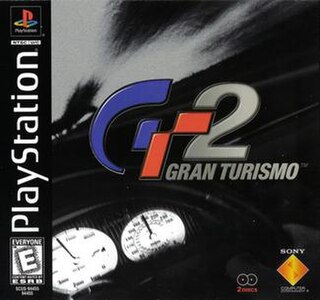
Gran Turismo 2 is a 1999 racing simulation video game developed by Polyphony Digital and published by Sony Computer Entertainment for the PlayStation. It is the sequel to Gran Turismo, the second installment of the Gran Turismo series, and the first installment in the series without involvement from Japan Studio.

Jet Moto 2 is a 1997 racing video game developed by SingleTrac and published by Sony Computer Entertainment for the PlayStation video game console. It is the sequel to the 1996 game Jet Moto. It was released in North America on November 11, 1997, in Europe in April 1998, and in Japan on August 6, 1998. In January 2008 Jet Moto 2 was made available for the PlayStation Portable and PlayStation 3 via the PlayStation Network. The PlayStation Greatest Hits version, branded within the game as Jet Moto 2: Championship Edition, is slightly different from the original in that the framerate is increased, the number of competitors is limited to four, and all the original Jet Moto tracks are unlocked from the start.

V-Rally 2 is a racing video game developed by Eden Studios and published by Infogrames for PlayStation, Dreamcast and Microsoft Windows. It was originally planned for release as a Nintendo 64 title, but was cancelled during the early development phases of the game and was never officially announced.

Hydro Thunder is an arcade inshore powerboat racing video game originally released by Midway Games in February 1999 and later released for the Sega Dreamcast as a launch title later that year. It was also released for the PlayStation and Nintendo 64 in early 2000. This game is part of Midway's Thunder series of racing games, which includes Offroad Thunder, 4 Wheel Thunder, and Arctic Thunder. Hydro Thunder Hurricane, a sequel to Hydro Thunder, was later released for the Xbox 360 on July 27, 2010 on Xbox Live Arcade.

TrickStyle is a futuristic racing video game developed by Criterion Games and published by Acclaim Entertainment for the Dreamcast and Microsoft Windows. Set in the future, the player takes part in stunt-filled hoverboard races through London, Tokyo, and Manhattan, or inside a massive arena called the Velodrome. AirBlade by Criterion and Namco is a spiritual successor. The game received mixed reviews from critics, who praised its graphics and physics, but criticized its gameplay, animations and sound.

Lego Racers is a Lego-themed racing video game developed by High Voltage Software and published by Lego Media in 1999.

Wipeout 3 is a futuristic racing video game developed by Psygnosis exclusively for the PlayStation. The title is the fourth game in the Wipeout series, and was released in Europe and North America in September 1999. Players control anti-gravity ships and use weapons to force other contenders out of the race.

Monaco Grand Prix: Racing Simulation 2, also known as just Monaco Grand Prix or Racing Simulation: Monaco Grand Prix, is a Formula One racing game developed and published by Ubisoft for the Windows, Nintendo 64, PlayStation, and Dreamcast. It was released in 1998–1999. A sequel, Racing Simulation 3, was released in 2002.

Test Drive 6 is a racing video game developed by Pitbull Syndicate for PlayStation, Microsoft Windows and Dreamcast. In the United States the game was published by Infogrames North America, while in Europe the game was published by Cryo Interactive. The game featured 37 licensed cars, plus four police car variants. As a first for the series, cars from General Motors are not playable in this game, instead they appear as traffic cars. The soundtrack featured industrial rock and techno music from artists such as Fear Factory, Lunatic Calm and Cirrus.
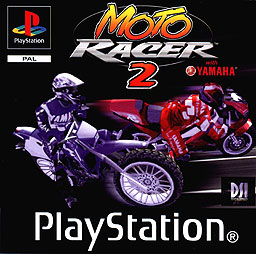
Moto Racer 2 is a motocross racing game developed by Delphine and published by Electronic Arts for PlayStation and Microsoft Windows. It is part of the Moto Racer series, and is the sequel to Moto Racer.
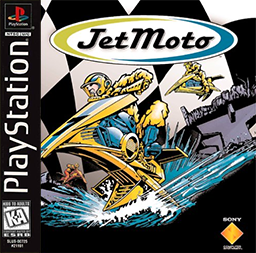
Jet Moto is a 1996 racing video game developed by SingleTrac and published by Sony Computer Entertainment for the PlayStation video game console and PC. The PlayStation version was released in North America on October 31, 1996; in 1997 for Europe in February and Japan on August 7. The PC version was released on November 13, 1997. Jet Moto was made available for the PlayStation Portable and PlayStation 3 via the PlayStation Network in February 2007. Developers chose fictional hovering bikes instead of wheeled motorcycles initially to resolve performance concerns. Other performance concerns led the team to develop two different physics systems—one for the player, and one for the 19 computer racers.

Moto Racer World Tour is an arcade style motorcycle racing game developed by Delphine Software International and published by SCEE in Europe and Infogrames in North America for the PlayStation.
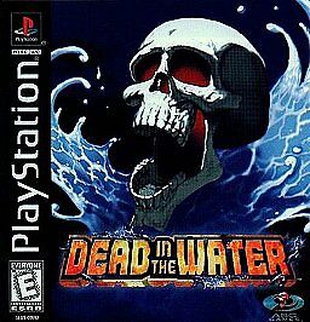
Dead in the Water is a boat racing game, released for the PlayStation in February 1999.
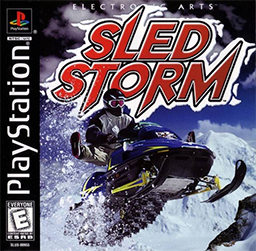
Sled Storm is a snowmobile racing video game published and developed by Electronic Arts. It gained critical acclaim due to its original concept of being one of the first snowmobile racing titles.
